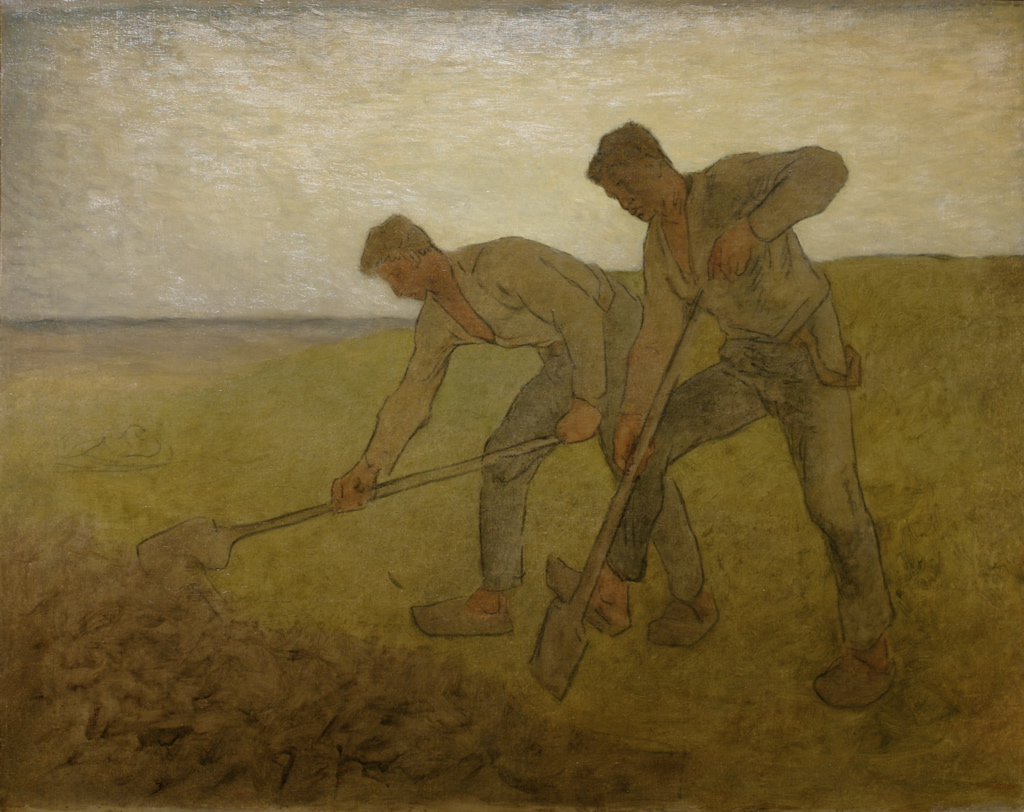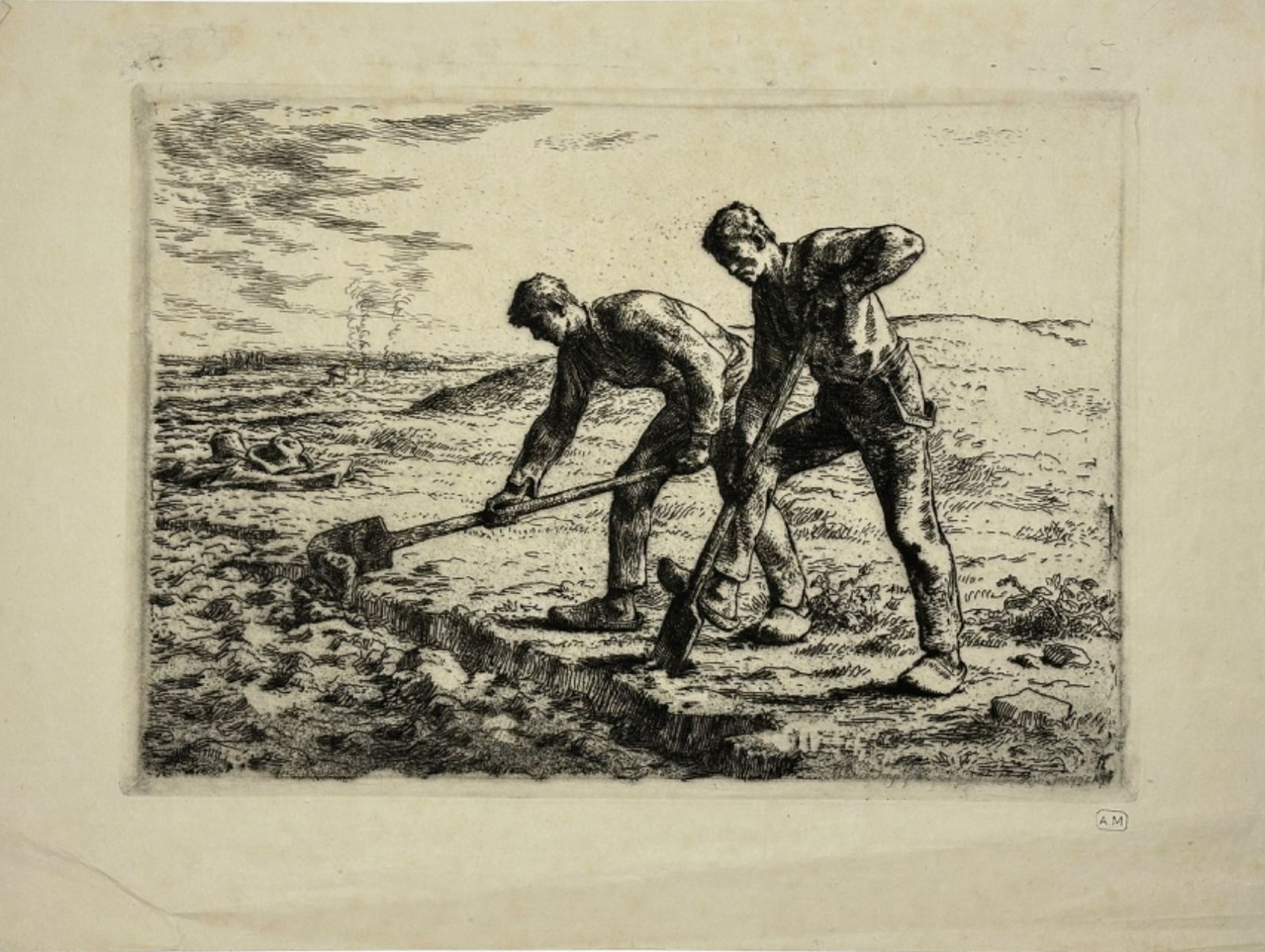|

|
|
Les Bêcheurs
Delteil 13, Melot 13
etching, 1855-56, on
medium-weight cream laid Japon paper, a very fine and early impression of
the 4th state (of 4), with plate tone in the foreground, with good margins, three scuffed corners,
a few light handling creases, of which one, more marked, lower left, remains of an
old hinge on the reverse, otherwise in fine condition
P. 237x337mm., S. 316x428mm.
Provenance; the A.M Collection (Lugt 148a)

|
Millet' s
devotion to life in the country and its simple folk has long been
acclaimed and this particular subject is quite characteristic.
s
devotion to life in the country and its simple folk has long been
acclaimed and this particular subject is quite characteristic.
Related works
are an impression of the first state in the INHA, which has been
squared off in pencil as if Millet intended to transpose it to another
medium:
https://bibliotheque-numerique.inha.fr/idurl/1/17630
a rough sketch for the worker on the right:
https://collections.louvre.fr/ark:/53355/cl020215749
and a corresponding work featuring the two main figures in the Tweed Museum of Art, UMD, right.
It might best however be of interest to cite Millet directly from a letter to Sensier on May 30, 1863:
Il
en est qui me disent que je nie les charmes de la campagne. J’y trouve
bien plus que des charmes : d’infinies splendeurs. J’y vois, tout comme
eux, les petites fleurs dont le Christ disait : « Je vous assure que
Salomon même dans toute sa gloire, n’a jamais été vêtu comme l’une
d’elles. » Je vois très bien les auréoles des pissenlits, et le soleil
qui étale là-bas, bien loin par delà les pays, sa gloire dans les
nuages. Je n’en vois pas moins dans la plaine, tout fumants, les
chevaux qui labourent ; puis, dans un endroit rocheux, un homme tout
errené, dont on a entendu les han ! depuis le matin, qui tâche de se
redresser un instant pour souffler. Le drame est enveloppé de
splendeurs. Cela n’est pas de mon invention, et il y a longtemps que
cette expression « le cri de la terre » est trouvée. *
in MOREAU-NÉLATON, Millet raconté par lui-même, 1921, Paris, H. Laurens. T. II, p. 129.
As regards the
present impression, it comes from an important collection of Barbizon
prints that was sold in Fontainebleau on 12 May 1940, for which the
expert Paul Prouté noted "Belle épreuve d'ancien tirage, sur Japon",
and which is again specifically cited as such in the Lugt entry (see
https://www.marquesdecollections.fr/FtDetail/8b7ddbbc-4462-cb4a-83c3-6fb21c64df00).
* "There are those who tell
me that I deny the charms of the countryside. I find there much more
than charms: infinite splendors. I see there, just like them, the
little flowers of which Christ said: "I assure you that not even
Solomon in all his glory was arrayed like one of these." I see very
clearly the halos of the dandelions, and the sun spreading its glory
there, far beyond the lands, in the clouds. I see no less in the plain,
all steaming, the horses plowing; then, in a rocky spot, a man all
wearied, whose huffing has been heard since morning, who tries to sit
up for a moment to catch his breath. The drama is enveloped in
splendors. This is not my invention, and the expression "the cry of the
earth" has long been coined."



 s
devotion to life in the country and its simple folk has long been
acclaimed and this particular subject is quite characteristic.
s
devotion to life in the country and its simple folk has long been
acclaimed and this particular subject is quite characteristic.